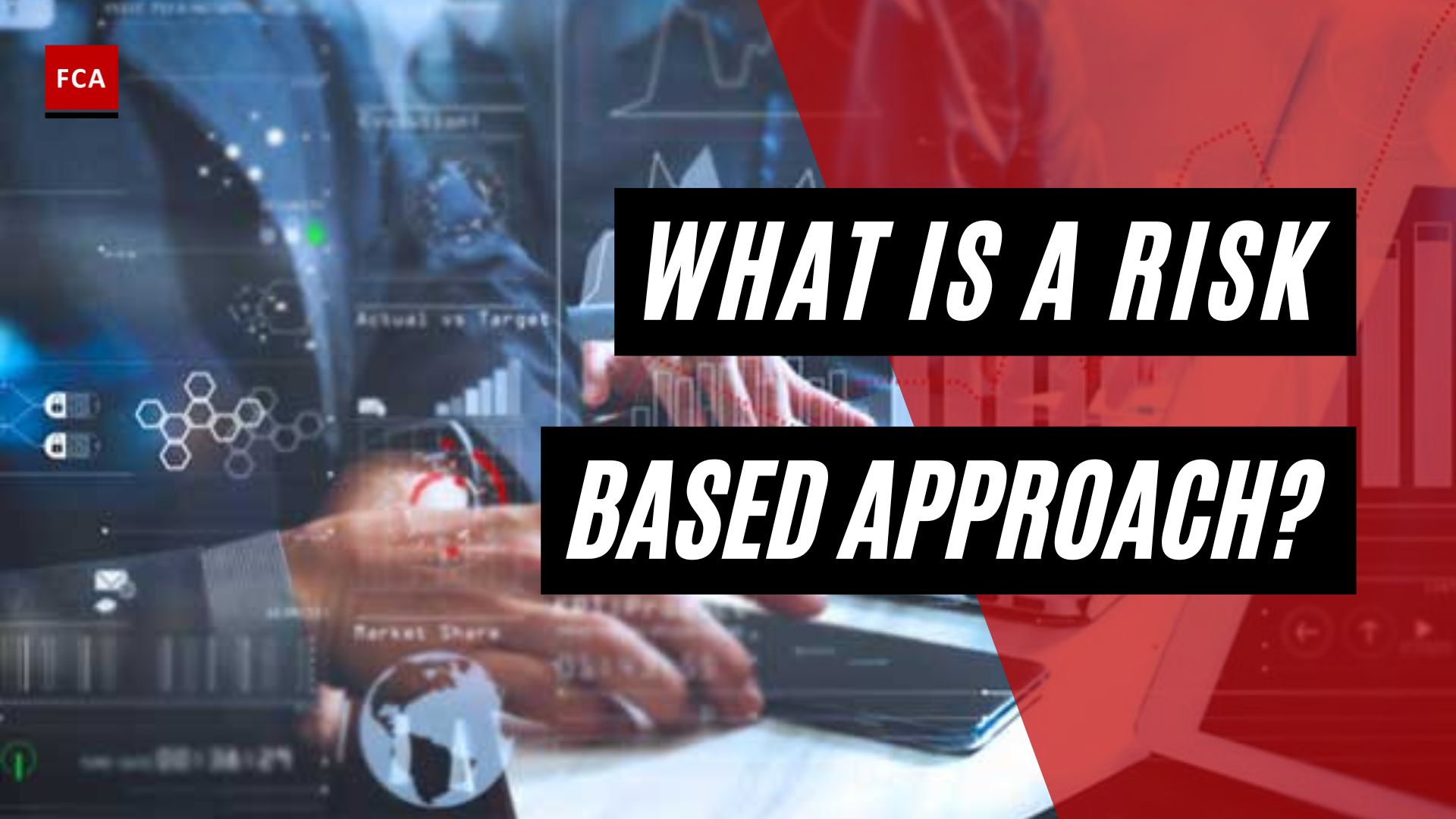AML Training for Executive Leadership
In the realm of anti-money laundering (AML) compliance, providing thorough training to executive leadership is of paramount importance. Senior management plays a pivotal role in setting the tone from the top and ensuring a culture of compliance within an organization (Financial Crime Academy). Understanding the significance of AML training for senior management and recognizing their role in AML compliance is essential for effective risk management and safeguarding the organization’s reputation and financial integrity.
Importance of AML Training for Senior Management
AML training for executive leadership is crucial as it equips them with the knowledge and skills necessary to combat financial crimes, such as money laundering and terrorist financing. By being aware of the risks associated with these illicit activities, senior management can make informed decisions and take appropriate actions to protect the organization (Financial Crime Academy).
Providing AML training to executive leadership demonstrates a commitment to regulatory compliance and risk management. It highlights the organization’s dedication to upholding ethical standards and ensuring adherence to AML regulations (Financial Crime Academy). By fostering a culture of compliance, senior management sets an example for employees at all levels and reinforces the importance of AML practices within the organization.
Role of Executive Leadership in AML Compliance
Executive leadership holds a significant responsibility in ensuring AML compliance throughout the organization. They are responsible for establishing and implementing appropriate policies and procedures, allocating resources, and overseeing the effectiveness of the AML program. By actively participating in AML training, senior management can gain a deeper understanding of their responsibilities, obligations, and implications in relation to AML regulations.
Moreover, senior management must be equipped to recognize potential vulnerabilities within the organization’s operations and implement adequate controls to mitigate the risks of money laundering and other financial crimes. By fostering a culture of compliance at all levels, executive leadership sets the tone for the organization and encourages employees to prioritize AML practices in their day-to-day activities.
By providing AML training to executive leadership, organizations demonstrate their commitment to regulatory compliance, risk management, and the protection of their reputation and financial integrity. Empowering senior management with the necessary knowledge and skills enables them to make informed decisions and actively contribute to the organization’s AML efforts.
Key Components of Effective AML Training
To ensure effective AML training for executive leadership, it is crucial to cover key components that provide a comprehensive understanding of anti-money laundering regulations and obligations. These components include:
Understanding AML Regulations and Laws
AML training for executive leadership should start by providing a thorough understanding of the relevant AML regulations and laws that financial institutions must adhere to. This includes familiarizing executives with laws such as the USA PATRIOT Act, the Bank Secrecy Act, and the Financial Crimes Enforcement Network (FinCEN) regulations (Finance Strategists). By gaining a clear understanding of these regulations, executives can ensure that their organizations are compliant and able to effectively combat money laundering activities.
Financial Crime Typologies and Red Flags
Another important component of AML training for executive leadership is educating them about various financial crime typologies and red flags. This involves learning about common money laundering techniques, such as structuring, smurfing, and trade-based money laundering, as well as recognizing suspicious patterns and transactions that may indicate potential money laundering activities. By understanding these typologies and red flags, executives can proactively identify and report suspicious activities, contributing to the overall effectiveness of the organization’s AML program.
Reporting Requirements and Obligations
Executives must be well-versed in the reporting requirements and obligations related to anti-money laundering efforts. This includes understanding when and how to file Suspicious Activity Reports (SARs) and Currency Transaction Reports (CTRs) with the appropriate regulatory authorities. AML training should provide detailed guidance on the reporting process, including the specific information that needs to be included in these reports, timelines for filing, and any other relevant reporting obligations. By ensuring executives are knowledgeable about reporting requirements, organizations can fulfill their legal and regulatory obligations and contribute to the broader efforts of combating money laundering.
By covering these key components in AML training for executive leadership, organizations can equip their senior management with the necessary knowledge and skills to effectively oversee AML compliance efforts. It is important for executives to stay up-to-date on the latest trends and developments in money laundering schemes and technologies to enhance their understanding of AML regulations and their ability to identify potential risks and vulnerabilities. A well-informed executive leadership team is essential for building and maintaining a strong culture of compliance within an organization, protecting its reputation and financial integrity.
Developing a Culture of Compliance
To effectively combat money laundering and ensure regulatory compliance, developing a culture of compliance is crucial within an organization. This involves recognizing vulnerabilities and implementing controls while fostering AML compliance at all levels.
Recognizing Vulnerabilities and Implementing Controls
AML training for executive leadership should empower them to recognize potential vulnerabilities in their operations and take appropriate measures to mitigate them. By understanding the risks associated with money laundering and financial crime, executives can identify weak points within their processes and systems. This recognition enables them to implement robust controls to prevent and detect suspicious activities.
Implementing controls involves establishing policies, procedures, and internal practices that align with regulatory requirements and industry best practices. These controls may include customer due diligence protocols, transaction monitoring systems, and employee training. Regularly reviewing and updating these controls ensures they remain effective and aligned with the evolving nature of money laundering threats.
By proactively identifying vulnerabilities and implementing controls, organizations can significantly reduce the risk of money laundering and protect themselves from legal and reputational damage.
Fostering AML Compliance at All Levels
In addition to recognizing vulnerabilities and implementing controls, fostering a culture of AML compliance at all levels of the organization is paramount. Executive leadership plays a crucial role in setting the tone and expectations for compliance throughout the company.
By visibly demonstrating their commitment to AML compliance, executives send a powerful message to employees, signaling the importance of adhering to regulatory requirements and the organization’s AML policies. This commitment trickles down, encouraging employees at all levels to prioritize compliance in their day-to-day activities.
To foster a culture of compliance, executives should promote open communication channels where employees feel comfortable reporting any suspicious activities or concerns. Regular training sessions, workshops, and communication about AML requirements and updates can help reinforce the importance of compliance and create a shared responsibility within the organization.
By fostering a culture of compliance, organizations can build a strong defense against money laundering and ensure that AML practices are integrated into every aspect of their operations.
AML training for executive leadership plays a pivotal role in developing a culture of compliance. By recognizing vulnerabilities and implementing controls, and by fostering AML compliance at all levels, organizations can strengthen their AML frameworks and protect themselves from financial crime risks. This commitment to regulatory compliance and risk management is essential for safeguarding the organization’s reputation and financial integrity.
Benefits of Providing AML Training to Executive Leadership
When it comes to combating money laundering and ensuring regulatory compliance, providing AML training to executive leadership is of paramount importance. This investment offers significant benefits to organizations, including a commitment to regulatory compliance and risk management, as well as protection of the organization’s reputation and financial integrity.
Commitment to Regulatory Compliance and Risk Management
By providing AML training to executive leadership, organizations demonstrate their commitment to regulatory compliance. Executives play a crucial role in setting the tone from the top and establishing a culture of compliance throughout the organization. When leaders are knowledgeable about AML regulations, senior management AML training requirements, and the importance of implementing effective AML compliance programs, they can effectively communicate these expectations to their teams.
Furthermore, executives who are well-versed in AML regulations are better equipped to understand and mitigate potential risks. They can provide strategic guidance and allocate resources appropriately to ensure that the organization’s AML compliance efforts are robust and effective. This commitment to regulatory compliance and risk management helps to safeguard the organization from legal and reputational risks.
Protecting the Organization’s Reputation and Financial Integrity
Effective AML training for executive leadership also plays a vital role in protecting the organization’s reputation and financial integrity. Financial institutions and businesses operating in regulated industries must maintain a strong reputation to retain the trust of their customers, stakeholders, and the wider market.
When executives receive thorough AML training, they gain a deep understanding of the importance of detecting and preventing money laundering activities. This knowledge empowers them to make informed decisions and implement appropriate measures to safeguard the organization’s reputation. By fostering a culture of compliance and ensuring that all employees, including top-level management, are well-versed in AML regulations and best practices, organizations can significantly reduce the risk of financial crimes and associated reputational damage.
Additionally, organizations that prioritize AML training for executive leadership enhance their ability to identify and address emerging risks. Money laundering techniques and regulatory requirements continually evolve, making it essential for executives to stay updated on money laundering trends. By doing so, they can proactively adapt their strategies, strengthen controls, and ensure that the organization remains at the forefront of AML compliance.
In conclusion, providing AML training to executive leadership is a critical component of an effective AML compliance program. It demonstrates a commitment to regulatory compliance, risk management, and protecting the organization’s reputation and financial integrity. By equipping executives with the necessary knowledge and skills, organizations can foster a culture of compliance, enhance their defense against financial crimes, and maintain the trust and confidence of stakeholders.
Tailoring AML Training for Executive Leadership
To ensure the effectiveness of AML (Anti-Money Laundering) training programs, it is crucial to tailor the training specifically for executive leadership. AML training for senior management should focus on relevant topics and areas that address their unique roles and responsibilities. Additionally, staying updated on money laundering trends is essential to keep executive leadership informed about evolving financial crime risks.
Topics and Areas of Focus
AML training for executive leadership should provide a comprehensive understanding of AML regulations and laws, including the USA PATRIOT Act, the Bank Secrecy Act, and the Financial Crimes Enforcement Network (FinCEN) (Finance Strategists). By familiarizing themselves with these regulations, executives can effectively oversee and support the implementation of AML compliance programs within their organizations.
In addition to regulations, AML training for executive leadership should cover various topics that are essential for their roles. These topics may include:
- Customer Due Diligence (CDD) and Know Your Customer (KYC): Executives should understand the importance of performing thorough due diligence on customers to identify and verify their identities, assess potential risks, and detect any suspicious activities.
- Suspicious Activity Reporting (SAR): Training should emphasize the significance of recognizing red flags and reporting suspicious transactions or activities to the appropriate authorities.
- Recordkeeping and Documentation: Executives should be aware of the recordkeeping requirements to ensure proper documentation of transactions, customer information, and compliance efforts (Finance Strategists).
- Transaction Monitoring and Risk Assessment: Understanding the importance of continuous transaction monitoring and risk assessment processes enables executives to assess the effectiveness of AML controls and make informed decisions to mitigate risks.
By focusing on these key topics, AML training for executive leadership equips them with the necessary knowledge and skills to fulfill their AML compliance obligations.
Staying Updated on Money Laundering Trends
Money laundering techniques and trends constantly evolve, making it crucial for executive leadership to stay updated on the latest developments. By remaining knowledgeable about emerging money laundering schemes and technologies, executives can enhance the effectiveness of AML training programs and compliance efforts within their organizations.
Regular training sessions, workshops, and access to industry resources can help executives stay informed about new typologies, red flags, and best practices for combating money laundering. This continuous learning approach ensures that executive leadership remains vigilant and equipped to address evolving financial crime risks.
By tailoring AML training for executive leadership and providing them with the necessary knowledge and tools, organizations can foster a culture of compliance, enhance regulatory compliance and risk management, and protect their reputation and financial integrity. This commitment to AML excellence at the highest level of the organization contributes to building effective compliance programs that safeguard against money laundering and mitigate associated risks.
Remember, an effective AML compliance program requires a comprehensive framework, risk assessment, policies, and customer due diligence. By providing tailored AML training to executive leadership, organizations can strengthen their overall AML compliance efforts and protect themselves from potential fines and penalties.
Best Practices for AML Training Programs
To ensure the effectiveness of Anti-Money Laundering (AML) training programs, it is important to follow best practices in terms of frequency and content of the training, as well as the auditing and documentation of the programs.
Frequency and Content of AML Training
The frequency at which AML training should be conducted depends on the risk profile of the institution and the roles and responsibilities of the individuals involved. Higher-risk firms typically ensure auditable AML training occurs annually, with additional reminders and briefings interspersed throughout the year. Lower-risk firms may require less frequent formal training, with recommendations for every two years (Jonathon Bray).
Trigger points for AML training include new staff induction to ensure consistent training standards and any material changes in the AML regulations or the firm’s internal policies, which should prompt a review of the training program (Jonathon Bray). By incorporating current developments and changes to regulatory requirements, supervisory guidance, internal policies, and processes, AML training programs can address the evolving landscape of financial crime prevention (BSA/AML Manual).
The content of AML training should cover a range of topics, including but not limited to:
- AML regulations and laws applicable to the jurisdiction in which the institution operates.
- Financial crime typologies and red flags to identify potential money laundering activities.
- Reporting requirements and obligations, ensuring employees understand their role in reporting suspicious transactions (BSA/AML Manual).
By providing comprehensive training that addresses these key components, institutions can equip their employees with the knowledge and skills necessary to effectively contribute to AML compliance efforts.
Auditing and Documentation of Training Programs
To maintain accountability and demonstrate compliance with regulatory requirements, banks should document their AML training programs. This includes maintaining training and testing materials, attendance records, and any corrective actions taken. Having clear and organized documentation is essential for auditor or examiner review and ensures that training programs can be properly evaluated for effectiveness.
Auditing the AML training programs periodically helps identify any gaps or areas for improvement. By conducting regular assessments, institutions can ensure that training programs remain up-to-date and aligned with the latest regulatory developments and internal policies.
Documentation and auditing of AML training programs contribute to a culture of compliance, instilling confidence in regulators and stakeholders that the institution is committed to maintaining a robust AML compliance program. This commitment goes beyond mere compliance with regulations and helps protect the organization’s reputation and financial integrity.
By following best practices in the frequency and content of AML training, as well as the auditing and documentation of training programs, institutions can strengthen their AML compliance efforts and contribute to a more effective overall compliance program.
The Role of AML Training in Building Effective Compliance Programs
To establish and maintain effective compliance programs, organizations must recognize the crucial role of AML training for executive leadership. A comprehensive AML framework, risk assessment and policies, and customer due diligence and monitoring are key components that rely on the expertise gained through training.
Comprehensive AML Framework
An anti-money laundering (AML) compliance program consists of a comprehensive framework of policies, procedures, and controls that financial institutions establish to detect, prevent, and report instances of money laundering and terrorist financing, ensuring compliance with applicable laws and regulations (KYC2020). AML training for executive leadership plays a vital role in understanding and implementing this framework throughout the organization.
By receiving AML training, executive leaders gain insights into the importance of an AML compliance program, the risks associated with money laundering and terrorist financing, and the regulatory requirements that guide the program’s development. This knowledge allows them to provide strategic direction, allocate resources effectively, and ensure that the organization operates within the boundaries of the law.
Risk Assessment and Policies
Conducting a comprehensive risk assessment is fundamental for any successful AML compliance program. This process involves the identification and analysis of potential money laundering risks associated with an institution’s customers, products, services, and geographical locations. The insights gained from the risk assessment allow organizations to tailor their AML strategies accordingly.
Through AML training, executive leadership becomes equipped to understand and assess these risks. They can then work alongside compliance and risk management teams to establish clear and concise written policies and procedures. These policies and procedures outline the organization’s commitment to AML compliance, define employee responsibilities, and guide the identification and reporting of suspicious activities. With a strong foundation in risk assessment and policies, executive leaders can ensure that the organization is well-prepared to combat money laundering effectively.
Customer Due Diligence and Monitoring
Customer due diligence (CDD) is a critical aspect of AML compliance. It involves assessing customer risk profiles, monitoring suspicious activities, and applying enhanced due diligence to high-risk customers, such as politically exposed persons (PEPs) and those from jurisdictions with weak AML controls. CDD helps organizations identify and mitigate potential money laundering risks within their customer base.
AML training for executive leadership provides an understanding of the importance of customer due diligence and monitoring. By participating in training programs, executive leaders gain insights into the strategies and tools used to effectively carry out customer due diligence. This knowledge allows them to oversee the implementation of robust customer identification, verification, and ongoing monitoring processes. Executive leaders can ensure that the organization stays vigilant in detecting and reporting suspicious activities, contributing to the fight against money laundering.
By actively engaging in AML training, executive leadership contributes to building effective compliance programs. Their understanding of the comprehensive AML framework, risk assessment and policies, and customer due diligence and monitoring enables them to provide guidance, make informed decisions, and maintain compliance with AML regulations. In turn, this helps protect the organization’s reputation, financial integrity, and ensures a commitment to regulatory compliance and risk management.








